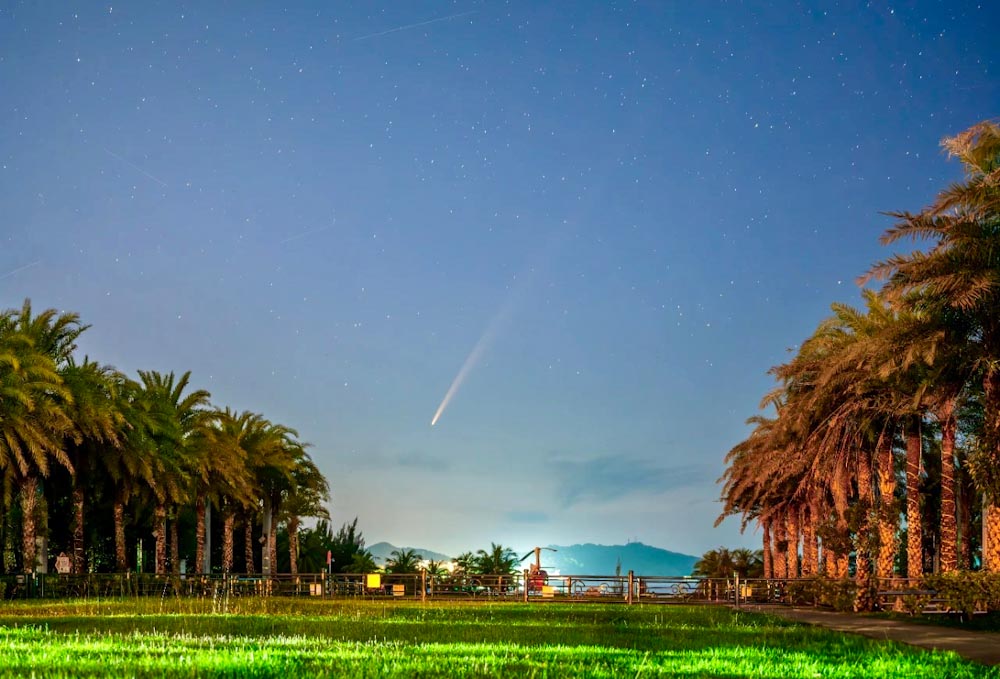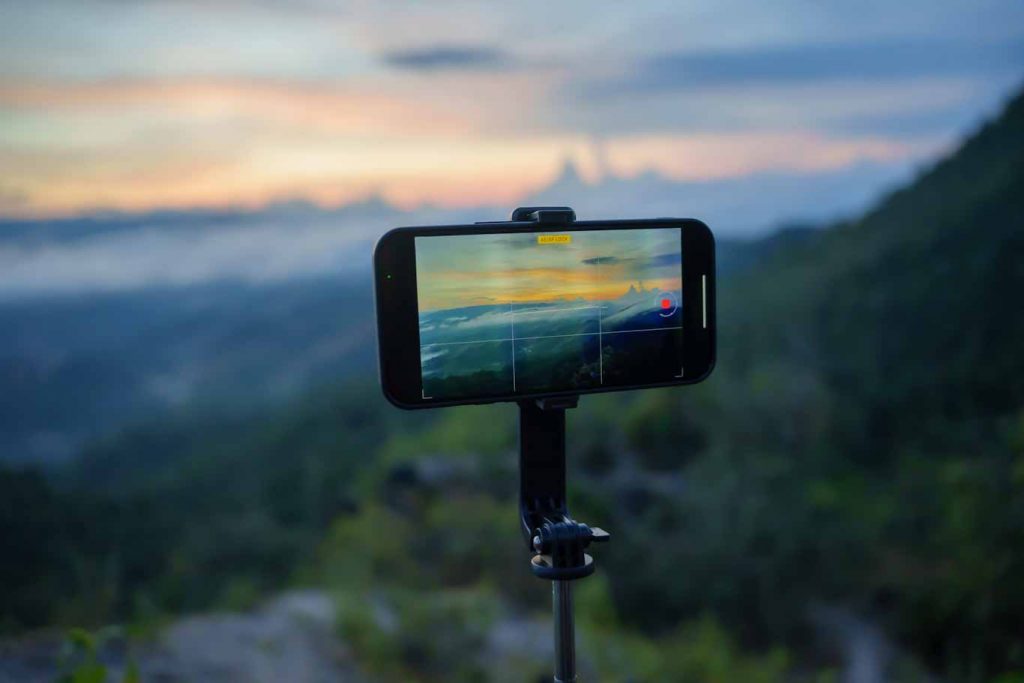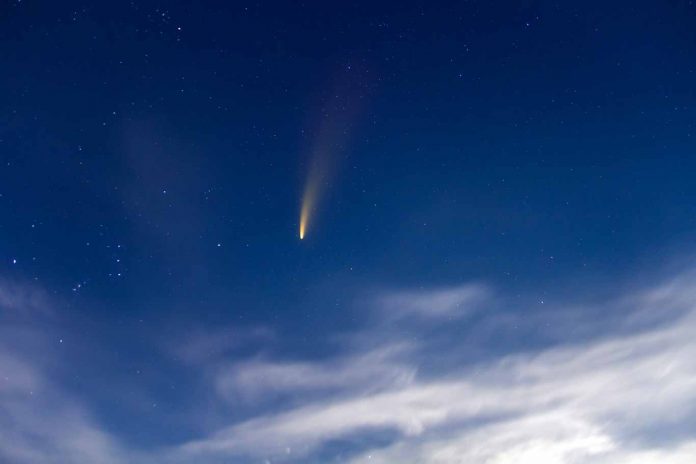A rare astronomical phenomenon is taking place in October, as Comet C/2023 A3 (Zijinshan-Atlas) graces the skies. The comet, visible once every 60,000 years, was recently captured on October 1st over Wuzhizhou Island in Haitang Bay, Sanya. Images showed the comet glowing against a backdrop of the ocean, coconut trees, and buildings, creating a stunning visual moment.

Now, as of October 5th, the comet is transitioning from its early morning appearance to becoming an evening star. If you’re eager to catch this celestial visitor, there’s still time to spot it just after sunset in the days ahead.
Comet C/2023 A3: A Rare Visitor from Space
Comet C/2023 A3 was first discovered by the Purple Mountain Observatory (紫金山天文台) in January 2023. It follows a retrograde orbit, meaning it travels around the Sun in the opposite direction to the Sun’s rotation. Its journey through the solar system takes approximately 61,751 years to complete. For this brief period in October, we are fortunate enough to witness its passing.
When and How to See the Comet Now
As of October 5th, the comet is close to the Sun, making it difficult to observe. However, after October 11th, it will become easier to see in the early evening sky, just after sunset. Here’s what to expect:
October 5 to October 11: The comet is near the Sun and will be almost impossible to see without special equipment to block the Sun’s glare. Its brightness is still building up, so observation will be limited.
After October 11: The comet will become visible in the early evening, shortly after sunset. Look towards the western sky, and if the comet reaches its predicted brightness, you might be able to spot its tail with the naked eye. It will rise higher each night but will start to fade gradually as it moves further away from Earth.
Simple Steps to Photograph the Comet with Your Smartphone
If you want to capture a photo of this rare comet, you don’t need professional camera equipment. Your smartphone, with a few simple adjustments, can do the job! Here’s a step-by-step guide:
Find a Good Location: Choose a spot with an unobstructed view of the western sky, away from city lights and other sources of light pollution. This will give you the best chance to see and photograph the comet clearly.

Use a Tripod or Stable Surface: Keep your phone steady by using a tripod. If you don’t have one, you can place your phone on a stable surface (like a table or rock) to avoid blurry photos caused by shaky hands.
Turn Off Flash and Auto Focus: Open your camera app and turn off the flash (it will just add glare). Switch to manual focus mode if possible, or use your camera’s focus lock feature to focus on a distant object like a faraway building or tree.
Adjust Exposure Settings: On most smartphones, you can manually adjust the exposure time (how long the camera’s sensor is exposed to light). Set it to at least 4 seconds. The longer the exposure time, the more light your phone’s camera will capture, which is crucial for photographing the faint light of the comet.
Set ISO to a Low Level: The ISO setting controls your camera’s sensitivity to light. For comet photography, set the ISO as low as possible (usually around 400–800) to reduce graininess or noise in your photo, while still capturing enough light.
Use a Timed Shutter: Set a 2- or 5-second timer on your phone’s camera. This will prevent any movement when you press the button to take the photo, ensuring a clearer shot.
Experiment with Your Shots: Take multiple photos with slightly different settings for exposure and focus, especially as the comet gets dimmer over time. Review the images afterward to see which settings worked best.
Try a Long Exposure App: If your phone’s default camera doesn’t allow for enough manual control, you can download a long exposure app. Apps like Slow Shutter Cam or NightCap allow you to manually control exposure and ISO, improving your results when shooting low-light subjects like the comet.
Free long exposure app IPhones …
Free long exposure app Android …
Comet C/2023 A3 is a once-in-a-lifetime sight. It won’t be back for another 60,000 years, so take the time this October to experience it. Even if you’re not an expert photographer, these simple steps can help you capture a memory of this celestial event. Don’t miss the chance to see it with your own eyes, and maybe even snap a stunning photo to remember the occasion!
Related article: Read more from our Events section






